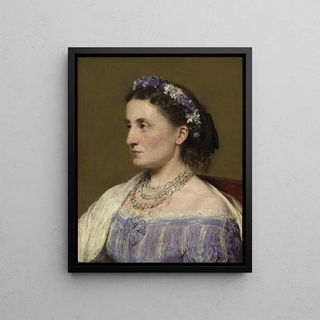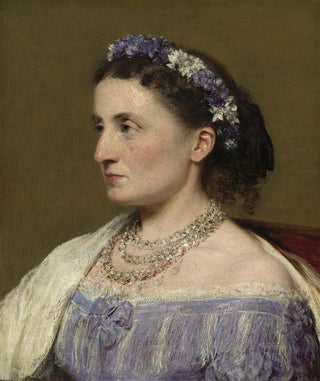Art print | Duchess of Fitz-James - Henri Fantin-Latour Source: Reproduction | Duchesse de Fitz-James - Henri Fantin-Latour


View from behind

Frame (optional)
Reproduction Duchesse de Fitz-James - Henri Fantin-Latour – Engaging introduction
The art print Duchesse de Fitz-James - Henri Fantin-Latour immerses us in the refined universe of the 19th century, where art and fashion intertwine with rare elegance. This iconic painting, created by Henri Fantin-Latour, celebrates the beauty and status of a woman from French high society. The depiction of the duchess, dressed in a sumptuous gown, evokes not only her charm but also the spirit of an era when visual art played a vital role in highlighting aristocratic figures. Through this work, Fantin-Latour invites us to explore the subtleties of social life and the codes of nobility, while offering a fascinating glimpse into human psychology.
Style and uniqueness of the work
Fantin-Latour's style is characterized by an impressive mastery of light and color. In "Duchesse de Fitz-James," the artist manages to capture the delicacy of fabrics and the brilliance of jewelry, creating an atmosphere that is both intimate and majestic. The shades of blue and gold blend harmoniously, while the texture of the clothing seems almost tangible. Every detail, from the contemplative gaze of the duchess to the fluidity of her gown, reflects meticulous observation and undeniable artistic sensitivity. This art print does not merely depict a portrait; it tells a story, that of a woman deep in thought, caught between the demands of her status and her personal aspirations.
The artist and his influence
Henri Fantin-Latour is a key figure in French art, recognized for his ability to transcend genres. Although primarily associated with the Impressionist movement, his work extends far beyond simple landscapes and still lifes. Fantin-Latour captured the essence of his era by incorporating elements of realism and symbolism into his creations. His encounters with artists such as Manet and Monet enriched his artistic vision, while allowing him to forge a unique identity. Through his portraits, he not only celebrated the beauty of his models but also explored deeper themes, such as solitude and contemplation. The "Duchesse de Fitz-J

Matte finish

View from behind

Frame (optional)
Reproduction Duchesse de Fitz-James - Henri Fantin-Latour – Engaging introduction
The art print Duchesse de Fitz-James - Henri Fantin-Latour immerses us in the refined universe of the 19th century, where art and fashion intertwine with rare elegance. This iconic painting, created by Henri Fantin-Latour, celebrates the beauty and status of a woman from French high society. The depiction of the duchess, dressed in a sumptuous gown, evokes not only her charm but also the spirit of an era when visual art played a vital role in highlighting aristocratic figures. Through this work, Fantin-Latour invites us to explore the subtleties of social life and the codes of nobility, while offering a fascinating glimpse into human psychology.
Style and uniqueness of the work
Fantin-Latour's style is characterized by an impressive mastery of light and color. In "Duchesse de Fitz-James," the artist manages to capture the delicacy of fabrics and the brilliance of jewelry, creating an atmosphere that is both intimate and majestic. The shades of blue and gold blend harmoniously, while the texture of the clothing seems almost tangible. Every detail, from the contemplative gaze of the duchess to the fluidity of her gown, reflects meticulous observation and undeniable artistic sensitivity. This art print does not merely depict a portrait; it tells a story, that of a woman deep in thought, caught between the demands of her status and her personal aspirations.
The artist and his influence
Henri Fantin-Latour is a key figure in French art, recognized for his ability to transcend genres. Although primarily associated with the Impressionist movement, his work extends far beyond simple landscapes and still lifes. Fantin-Latour captured the essence of his era by incorporating elements of realism and symbolism into his creations. His encounters with artists such as Manet and Monet enriched his artistic vision, while allowing him to forge a unique identity. Through his portraits, he not only celebrated the beauty of his models but also explored deeper themes, such as solitude and contemplation. The "Duchesse de Fitz-J






